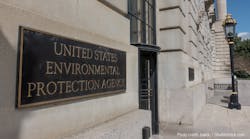The U.S. Environmental Protection Agency (EPA) issued in March a temporary enforcement policy relaxing certain compliance obligations because of the COVID-19 pandemic. On June 29, the agency announced an “addendum on termination” that aims to end the policy on August 31, 2020. This column discusses the termination memorandum.
Background
On March 26, the EPA announced its temporary policy regarding enforcement of environmental legal obligations during the pandemic. The EPA states that its temporary enforcement discretion policy applies to civil violations during the outbreak. The policy addresses categories of noncompliance differently. For example, according to the EPA, it “does not expect to seek penalties for noncompliance with routine monitoring and reporting obligations that are the result of the COVID-19 pandemic but does expect operators of public water systems to continue to ensure the safety of our drinking water supplies.” To be eligible for enforcement discretion, facilities must document decisions made to prevent or mitigate noncompliance and demonstrate how the pandemic caused the noncompliance.
The policy does not apply to imports. The agency, according to the policy, is “especially concerned about pesticide products entering the United States, or produced, manufactured, distributed in the United States, that claim to address COVID-19 impacts.” The EPA “expects to focus on ensuring compliance with requirements applicable to these products to ensure protection of public health.”
[pullquote]
Termination Addendum
According to the addendum, “EPA will not base any exercise of enforcement discretion on this temporary policy for any noncompliance that occurs after August 31, 2020.” The date “reflects the appropriate balancing of the relevant factors; it recognizes that the circumstances surrounding the temporary policy are changing, but also ensures that there is adequate time to adjust to the changing circumstances.” The memorandum urges entities to make every effort to comply with their environmental compliance obligations; the temporary enforcement policy “applies only to situations where compliance is not reasonably practicable as a result of COVID-19. These situations should become fewer and fewer.” The addendum provides that the EPA may terminate the temporary enforcement policy on a state or national basis, in whole or in part, at any earlier time. If the EPA does terminate the policy before August 31, 2020, it will provide notification at least seven days prior.
The memorandum notes as states and businesses re-open, a period of adjustment is expected as regulated entities plan how to comply with environmental legal obligations and with public health guidance from the Centers for Disease Control and Prevention and other agencies regarding actions intended to stem the transmission and spread of COVID-19. The memorandum states, “it is now appropriate to expressly include a provision in the temporary policy that covers termination of the temporary policy, and to make such changes to the policy as are needed to reflect the impact of the changing circumstances on facility operations, worker shortages, and other constraints caused by the public health emergency.”
Discussion
The EPA’s “termination memorandum” was expected. The policy was widely misinterpreted as an end-run around enforcement and EPA detractors used it as a basis to criticize the agency. Whether the agency is anxious to end the policy as a result of the criticism or believes the policy has outlived its utility is unclear.
The new concern is the “termination” may be premature and thus possibly overly optimistic. As COVID-19 cases are surging in a growing number of states, some might argue the need for the relief offered under the enforcement discretion memorandum is every bit as crucial now as when it was issued. It is unclear what likely is expected to be different by the end of August. Should the amount of cases not materially change, presumably the EPA would revisit the end date and reactivate the policy. We can only hope there will be no need to do so.
The EPA has updated its frequently asked questions about the temporary enforcement policy to include helpful questions that readers may find useful.
LYNN L. BERGESON is Chemical Processing's Regulatory Editor. You can e-mail her at [email protected]
Lynn is managing director of Bergeson & Campbell, P.C., a Washington, D.C.-based law firm that concentrates on conventional, biobased, and nanoscale chemical industry issues. She served as chair of the American Bar Association Section of Environment, Energy, and Resources (2005-2006). The views expressed herein are solely those of the author. This column is not intended to provide, nor should be construed as, legal advice.



